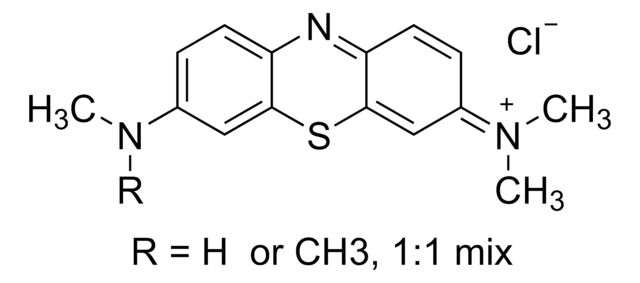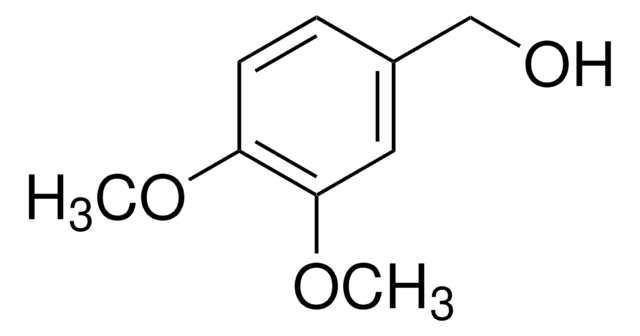A4043
Azure B
Dye content, ≥80%, certified by the Biological Stain Commission, powder
Synonym(s):
N,N,N′-Trimethylthionin, Azure I, Methyleneazure
Sign Into View Organizational & Contract Pricing
Select a Size
All Photos(3)
Select a Size
Change View
About This Item
Empirical Formula (Hill Notation):
C15H16ClN3S
CAS Number:
Molecular Weight:
305.83
Colour Index Number:
52010
Beilstein/REAXYS Number:
3922630
EC Number:
MDL number:
UNSPSC Code:
12171500
PubChem Substance ID:
NACRES:
NA.47
Recommended Products
Product Name
Azure B, certified by the BSC
agency
certified by the BSC
Quality Level
form
powder
composition
Dye content, ≥80%
technique(s)
microbe id | staining: suitable
color
dark green
mp
205-210 °C (dec.) (lit.)
solubility
H2O: 1 mg/mL
fluorescence
λex 648 in ethanol
Looking for similar products? Visit Product Comparison Guide
Application
Azure B has been used for the staining of chromosomes.
Biochem/physiol Actions
Azure B is a cationic dye. It is part of the Romanowsky stain, which is used for the staining of blood films. It is also used for the localization of nucleic acids.
Suitability
Certified for use in Lillie′s modified Nocht′s method for paraffin sections and the NCCLS method for blood smears.
signalword
Warning
hcodes
Hazard Classifications
Acute Tox. 4 Oral
Storage Class
11 - Combustible Solids
wgk_germany
WGK 3
flash_point_f
Not applicable
flash_point_c
Not applicable
ppe
Eyeshields, Gloves, type N95 (US)
Choose from one of the most recent versions:
Already Own This Product?
Find documentation for the products that you have recently purchased in the Document Library.
Customers Also Viewed
Nuclear DNA content, base composition, and cytogenetic characterization of Christia obcordata.
Sakhanokho HG and Islam-Faridi N
J. Am. Soc. Hort. Sci., 138, 205-209 (2013)
Bain BJ, et al.
Dacie and Lewis Practical Haematology (2016)
C J Kligora et al.
Modern pathology : an official journal of the United States and Canadian Academy of Pathology, Inc, 12(12), 1143-1147 (2000-01-05)
Distinguishing heavily pigmented melanocytes from melanophages on routine hematoxylin and eosin slides can be difficult. Melanin bleaching with potassium permanganate solution is a traditional means of removing melanin from tissues and can be used before immunohistochemical staining to remove any
F S Archibald
Applied and environmental microbiology, 58(9), 3110-3116 (1992-09-01)
The discovery in 1983 of fungal "ligninases" capable of catalyzing the peroxidation of nonphenolic aromatic lignin components has been seen as a major advance in understanding how certain basidiomycete fungi can completely degrade lignin. The ability of these lignin-type peroxidases
Anél Petzer et al.
Toxicology and applied pharmacology, 258(3), 403-409 (2011-12-27)
Methylene blue (MB) has been shown to act at multiple cellular and molecular targets and as a result possesses diverse medical applications. Among these is a high potency reversible inhibition of monoamine oxidase A (MAO-A) that may, at least in
Our team of scientists has experience in all areas of research including Life Science, Material Science, Chemical Synthesis, Chromatography, Analytical and many others.
Contact Technical Service







